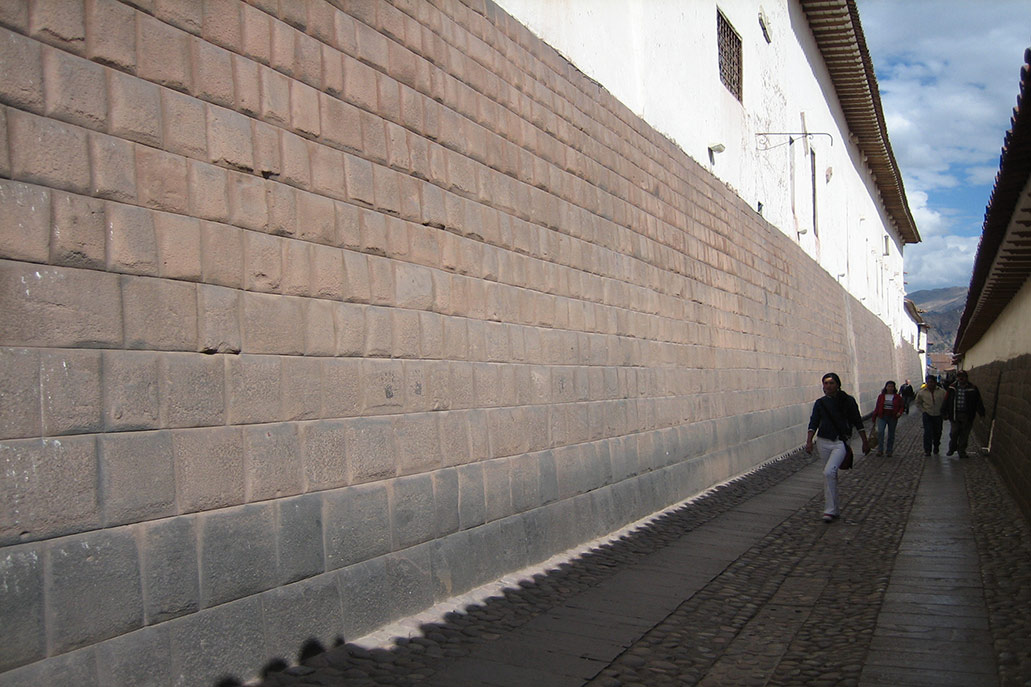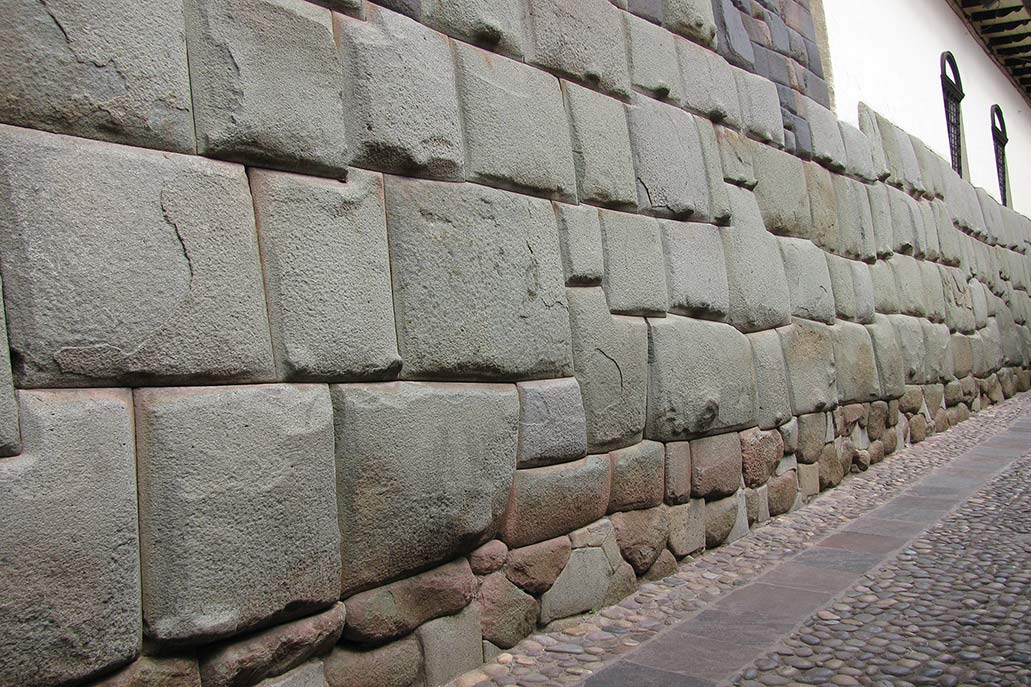The 8 most famous streets in Peru
Peru is a country through whose streets there are countless stories. Since the Inca and pre-Inca times, during the colonial and Republican times, Peruvian cities built streets and streets that, over time, became important historical tourist attractions. The most touristic cities, such as Lima, Cusco, Arequipa, Piura and Ayacucho, have some of the most famous streets in Peru. Know the 8 streets that you should visit in the country.
Content
The historic streets of Cusco – The city of Cusco was the capital of the immense Inca empire, which covered regions of Peru, Bolivia, Ecuador, Colombia, Chile and Argentina. Today, after more than four hundred years, the city still preserves the Inca structure of its stone streets. These are narrow, long, suitable for the passage of flames and the drainage of water in the rain. Everywhere there are Inca streets as well as temples and stone enclosures. That is why Cusco is known as a ‘museum city’. Visit it and walk through its magical streets.
The jirón of the Union in Lima
Mercaderes Street, today known as Jirón de la Unión, is one of the busiest spaces in Lima. Its history originates with the founding of the city in 1535 by Francisco Pizarro. It connects the Plaza de Armas with the Plaza San Martín in Lima. In the 17th, 18th and 19th centuries it had an aristocratic character. However, today it is a very commercial street. In 2023 it was chosen as the sixth most expensive street in Latin America.
The jirón de la Unión initially housed the main cafes, restaurants, jewelry and clothing stores, which were preferred by the upper social class of Lima. Since then the definition of ‘jironear’ has been used to refer to visiting this street. Today it houses cinemas, shopping centers and different products. It is visited by all Peruvians and foreign visitors. In its surroundings you can visit places such as the Plaza de Armas or the Government Palace.
- Location: In the Historic Center of Lima, it connects the Plaza Mayor of Lima with the Plaza San Martín. Covers eleven blocks.
- Activities: The Plaza de Armas, the Cathedral, the Government Palace, the Municipal Palace of Lima, the La Merced church, the Gran Hotel Bolívar, Alameda Chabuca Granda and the Rímac river.
Capón Street in Lima
Capón Street or simply Chinatown is one of the most popular public spaces in the historic center of the city of Lima. It is located in the Barrios Altos, between the Ucayali jirón and the Paruro jirón. As its name indicates, the street acquired its name due to the proliferation of businesses by Chinese migrants from Canton and Sichuan in the mid-19th century. To this day, Chinese culture is breathed in this famous street.
Capon Street owes its name because in the beginning pigs were caponated (castrated) there. Since their beginnings in the 19th century, Chinese migrants stood out for their ‘chifas’, a fusion of oriental and Peruvian food. Today this street also stands out for its restaurants, imported products from China, financial centers and more. The street tiles are inscribed with people, couples and others.
- Location: In the upper neighborhoods of Lima (city center), between the Jirón de la Unión and the Jirón Paruro.
- Activities: Chinese food restaurants, cultural activities of Chinese culture and more.
Pizza Street in Lima
Pizza Street, also called Ramón Passage, is one of the most popular public spaces for young people and tourists in Lima. It is located in front of Kennedy Park, in the beautiful district of Miraflores. It owes its name to the fact that, until 2019, there were several pizzerias and Italian food restaurants. However, from 2020 onwards it was reorganized and today it is a safe tourist passage where you can breathe culture.
The houses that make up Pizza Street were built in the 1930s and 1940s. Today the street boasts green areas, infographics about the history of the district, restaurants and, at night, discos and bars with surveillance and security. The street is two blocks long. In the surroundings you can visit Kennedy Park, the Miraflores boardwalk with sea views and important shopping centers.
- Location: In the tourist district of Miraflores, in front of Kennedy Park.
- Activities: Tourist restaurants, cafes, green areas, Kennedy Park, Miraflores boardwalk, as well as bars and clubs at night.
Loreto Street in Cusco
Loreto Street is one of the most historic and famous public spaces in the city of Cusco. It connects the Plaza de Armas with Maruri Street through a narrow passage typical of the Inca era. The street is made up of two large Inca walls with the intervention of colonial structures. One of the walls was the palace of Emperor Huayna Cápac. It is called ‘Amaru Cancha’ or the house of the snake. The other wall belonged to ‘Acllahuasi’, which was the house of the virgins of the sun.
Its name is due to the fact that the street begins at the church of La Merced, with the chapel of Our Lady of Loreto. However, it was also known, in Inca times, as ‘Intik’ijllu’ street, which means ‘the street of the sun’. Due to the architectural and historical beauty, many tourists like to take photographs on the street. It is four meters wide and has an average length of 231 meters.
- Location: Loreto Street is located in the historic center of Cusco, between the Plaza de Armas and Maruri Street in Cusco.
- Activities: Historic street, Plaza de Armas, La Merced Church, tourist shops, tourist restaurants and more.
Hatun Rumiyoc street in Cusco
Hatun Rumiyoc street is one of the busiest and most historic streets in the city of Cusco. Its name in the Quechua language means ‘Of the biggest rock’. And in the middle of the street you will find the Inca Roca Palace where the famous Stone of the 12 Angles stands out, a rock molded and carved so that it fits perfectly with the rest of the wall in its twelve angles. Many tourists like to take photos there.
Hatun Rumiyoc Street is also famous for the tourist businesses in its vicinity, such as restaurants, bars and craft shops. The street is between Triunfo Street (which connects with the Plaza de Armas) and Choquechaka Avenue. A few steps up a steep slope you reach the San Blas square in the neighborhood of the same name. Hatun Rumiyoc Street is approximately 141 meters long and three meters wide.
- Location: In the historic center of Cusco, between Triunfo Street and Choquechaka Avenue.
- Activities: Stone of the 12 Angles, craft shops, San Blas neighborhood.
Santa Catalina Street in Arequipa
Santa Catalina Street is one of the busiest and most beautiful streets in the city of Arequipa. Its name is related to the building of the Santa Catalina monastery there, one of the main tourist attractions of the ‘White City’. In addition, many neighboring buildings are made of ashlar stone, characteristic of the city. For this reason, on Santa Catalina Street you can breathe the Arequipa culture everywhere.
Santa Catalina Street was laid out at the founding of the city of Arequipa on August 15, 1540. On this short but historic street (approximately 3 blocks) there are tourist restaurants, craft shops, tourist hotels and, above all, the convent. of Santa Catalina, made of ashlar. Visitors can taste the frozen cheese and get beautiful photographs of the city.
- Location: In the historic center of the city of Arequipa – in one of the corners of the Plaza de Armas-.
- Activities: Tourist restaurants, craft shops, tourist hotels and, above all, the convent of Santa Catalina.
Ayacucho street in Piura
Ayacucho street is one of the most commercial and picturesque streets in the city of Piura, in northern Peru. It is located in the city fence, in one of the corners of the Plaza de Armas of Piura. It is famous for its hectic commercial life, its narrow streets and its 7 blocks with a pedestrian walkway decorated with umbrellas like famous Latin American cities, such as Cartagena in Colombia (the street of umbrellas).
Ayacucho Street in Piura acquired its most beautiful face in 2022 at the initiative of the ‘Patio Perú’ group. The place also shows beautiful decoration. Pedestrians can find a bit of shade there in the hot ‘City of Eternal Summer’. The street has security. In addition to the restaurants and craft shops, the Plaza del Sol shopping center stands out. It is a suitable space to escape the noise of the city.
- Location: In the center of the city of Piura, on one of the corners of the Plaza de Armas.
- Activities: Restaurants, craft and photography shops.
28 de Julio Street in Ayacucho
Calle 28 de Julio, also called Jirón 28 de Julio, is one of the most picturesque streets in the city of Ayacucho in the Andes Mountains of Peru. It is famous for its picturesque streets, with businesses and the Arc de Triomphe (with the corner of Jirón Carlos Vivanco). It is in one of the corners of the Plaza de Armas of Huamanga. It owes its name to the celebration of the Independence of Peru on July 28, 1821.
The most famous tourist attraction on 28 de Julio Street is, without a doubt, the Arc de Triomphe, which was built in 1886 in tribute to the victory in the combat of May 2. In addition, it stands out for its churches such as the Temple of the Company of Jesus. The place has an active tourist offer such as restaurants, cafes, hotels, craft centers and more. It is one of the most photographed places in the ‘City of Thirty-Three Churches’.
- Location: In the historic center of the city of Huamanga (in one of the corners of the main square).
- Activities: Restaurants, shopping centers, crafts, the church of the Company of Jesus and the Arc de Triomphe.
By Machupicchu Terra – Last updated, December 12, 2023







